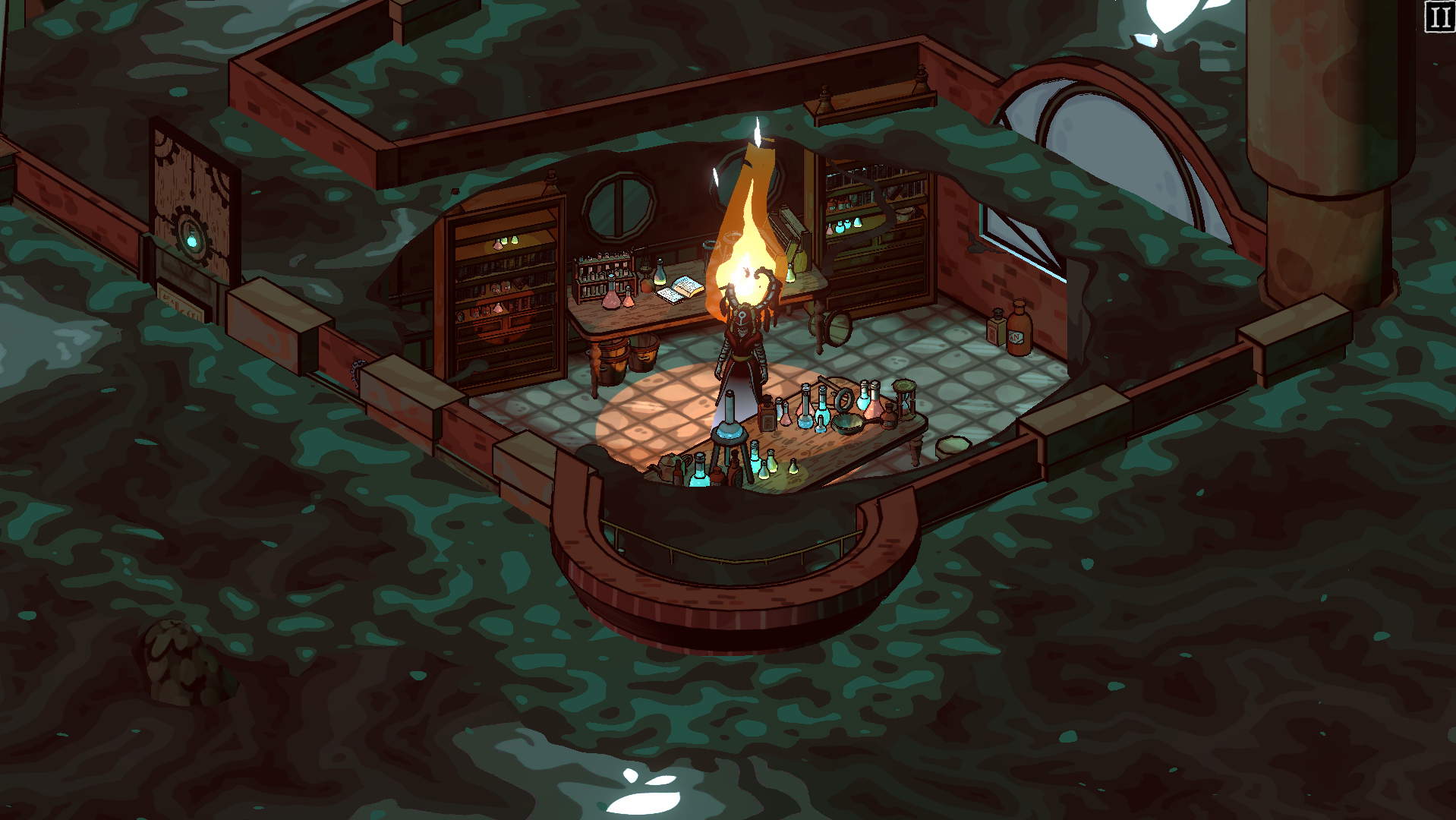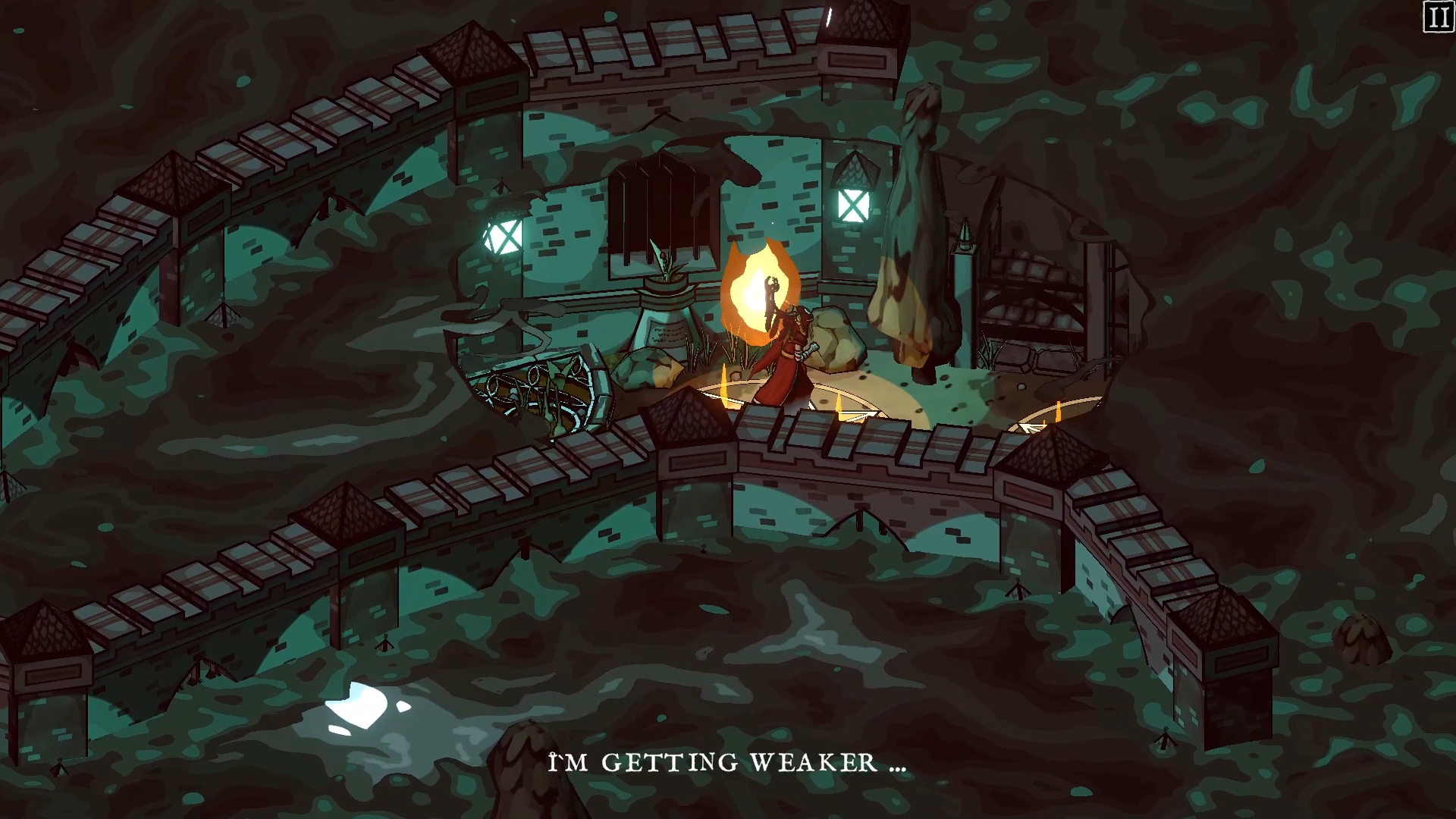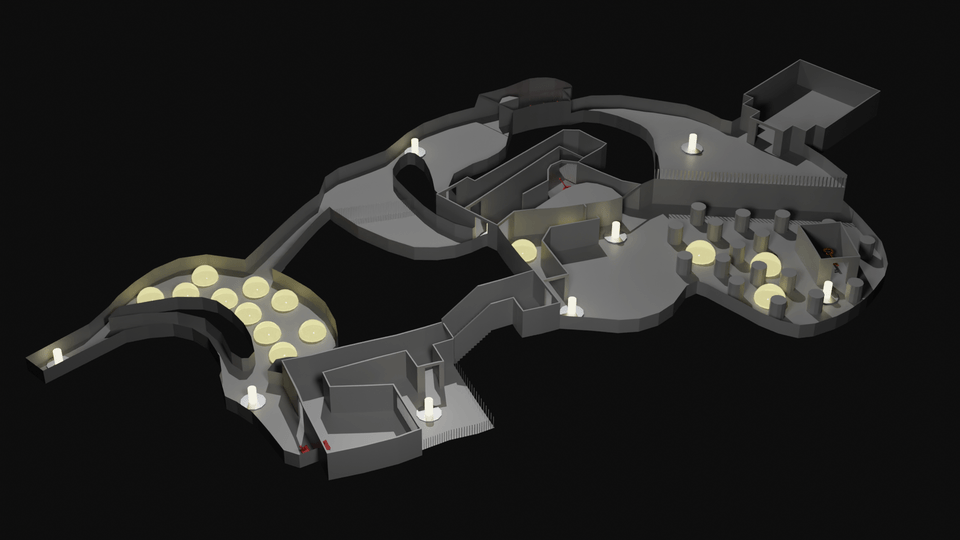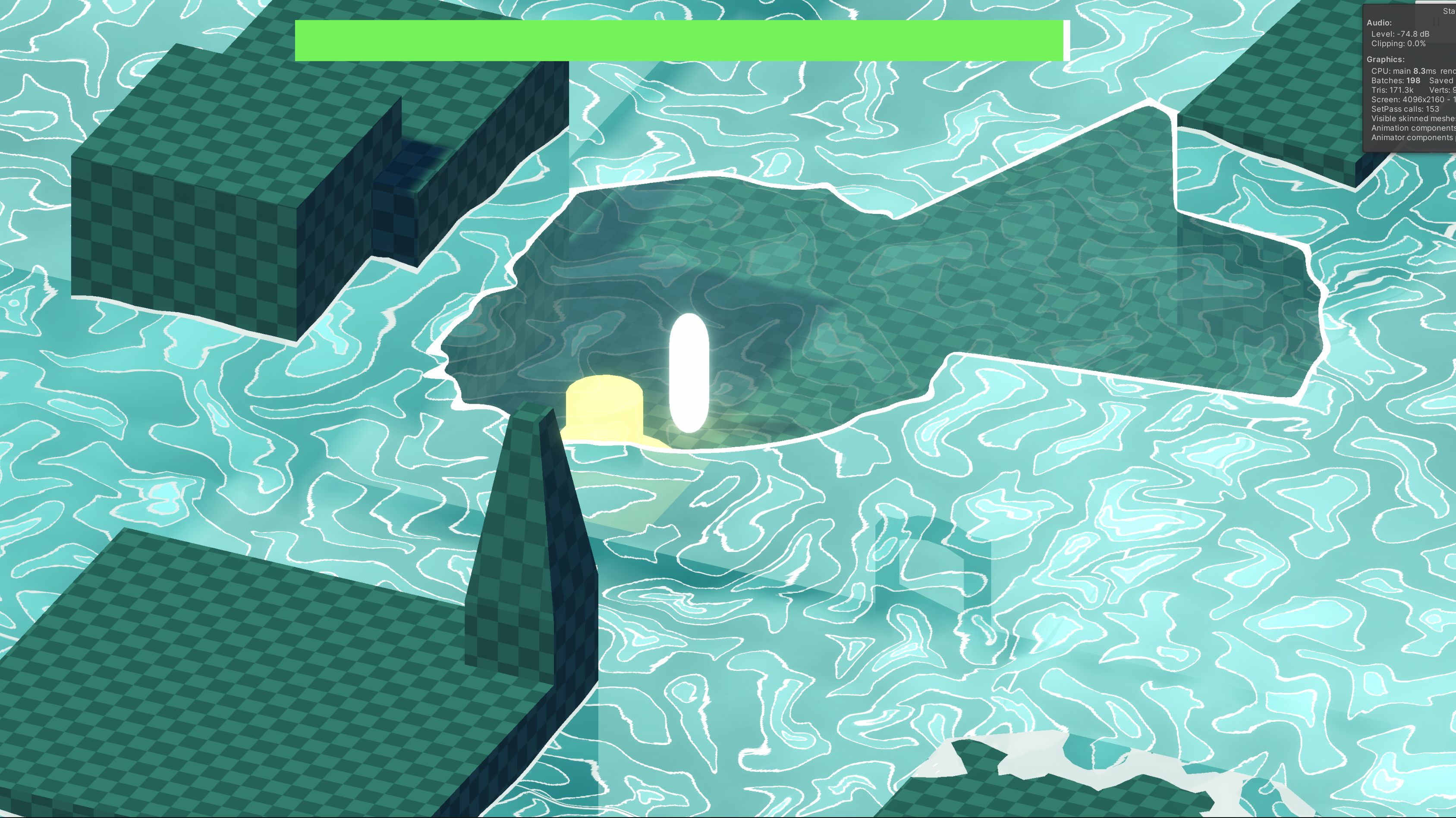
LIGHTBOUND
Lightbound is a single-player adventure game in which the objective is to move efficiently
and skillfully in the environment to find and collect multiple items. This way, the
protagonist can advance to the chapel that represents the end of the level. The game was
created as a studio production in the Interactive Media / Games department at the
Hochschule der Medien
in winter semester 2021/22.
Further information as well as a download link are on the
website
of Hochschule der Medien Stuttgart.


DEVELOPMENT
The game was developed in a period of 3 months. A first a prototype was created by a part of our team
in a prototyping workshop. This workshop lasted 2 weeks and took place immediately before the start of the project.
We were able to assemble a team of 13 students for the development. Together we implemented the game in 3D in the
Unity Engine. It shows the protagonist from an isometric perspective and can be played with
mouse and keyboard as well as with controller. Other tools and software that was used include Blender,
Krita, SVN and others.


MY ROLE IN DEVELOPMENT
In the Lightbound project, I took on the role of lead programmer.
I had already gained experience in this role in previous projects and this time I
also learned a lot during the project.
From my internship experiences and previous projects, I was able to take away some
principles and development approaches that we as a team wanted to incorporate into
Lightbound.
One particular feature, for example, is the adjustable language.
Lightbound was the first of my student projects in which I implemented such a feature.
We implemented the language adaptation through an extended dialog and text system.
For this I wrote a tool for the Unity Engine that downloads a spreadsheet file as a csv
file and provides it locally as an asset. This asset contains all texts, menu options and
dialogs that appear in the game - in German and in English. This "database" is then read
in at the beginning of the game and stored as a dictionary with an ID.
So the different texts can be returned in different languages. The language is
distinguished by means of a global language ID.


The big advantage of the system is that the texts only have to be stored once in each language in the game.
Additional languages can be easily entered via Google Spreadsheet by the game designers, artists
and if necessary even by the players.
One challenge was working with custom shaders needed to represent the fog and its recess. For this,
our technical artist worked closely with us programmers. I really enjoyed looking beneath the surface
of the rendering system and learning more about its details.
During the development of Lightbound, I also became very interested in the deeper systems
of a game engine.